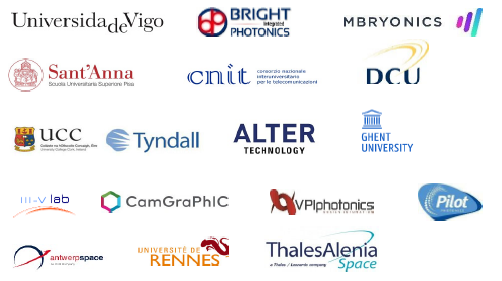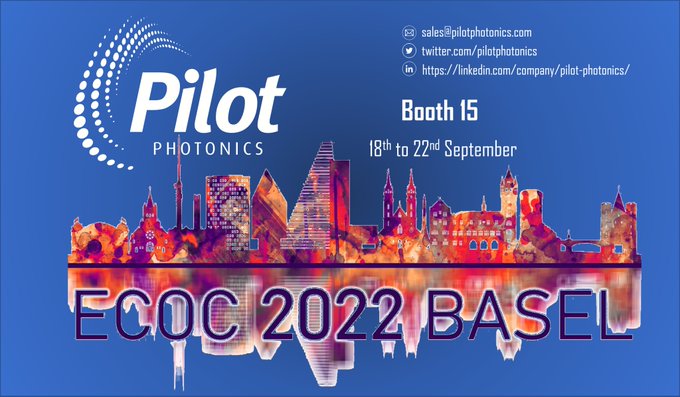November 21, 2022 Pilot Photonics joined partners from around Europe to formally commence the...
Enabling the Next Generation of Space Communication, Observation and Science
 In February 2025 Pilot Photonics attended the Paris Space Week for the first time, exhibiting as part of the Irish Pavilion. Our application to participate in the PSW Innovation Challenge was accepted, and CTO and Co-Founder of Pilot, Frank Smyth delivered a presentation entitled 'Astro-FGTM: Agile Optical Frequency Generator' to a panel of judges. At the awards ceremony later the same day, we learnt that we had won the Innovation Challenge, with an award presented by Colonel Noël Farnaud. Needless to say, we're thrilled and proud to receive this recognition of our innovation in space communications, observation and science.
In February 2025 Pilot Photonics attended the Paris Space Week for the first time, exhibiting as part of the Irish Pavilion. Our application to participate in the PSW Innovation Challenge was accepted, and CTO and Co-Founder of Pilot, Frank Smyth delivered a presentation entitled 'Astro-FGTM: Agile Optical Frequency Generator' to a panel of judges. At the awards ceremony later the same day, we learnt that we had won the Innovation Challenge, with an award presented by Colonel Noël Farnaud. Needless to say, we're thrilled and proud to receive this recognition of our innovation in space communications, observation and science.
Pilot Photonics' Co-Founder and CTO being presented with the PSW Innovation Challenge
Award by Colonel Noël Farnaud from the French Space Command
What was significant about what we said? Read on...
The next generation of advanced space applications will demand for higher frequency components - needed for faster data rates and more precise measurements. Traditional electronic approaches struggle to provide the frequencies, bandwidth and noise performance required within an acceptable cost, size, weight and power envelope. So new innovations are needed.
The Limitations and Hurdles:
- Limited Bandwidth: Electronic frequency sources typically have a narrow range of operation so dedicated hardware is needed for each band
- Noise Issues and Power Dissipation: Electronic methods use multiplier chains which suffer from poor conversion efficiency and add noise at each stage
- Size & Weight: At high frequencies the connectivity to transport the signals requires bulky hardware
Pilot Photonics' breakthrough is in being able to generate microwave, mmWave and sub-THz frequencies on its ASTRO-FGTM platform by leveraging the optical domain and photonic integration. Optical frequencies are roughly 10,000 times higher than the GHz range we typically use in microwave electronics. This breakthrough combines our optical frequency comb technology, with state-of-the-art photonic integration and advanced semiconductor packaging.


Comb lasers are known to bridge the microwave and optical worlds, but how does the ASTRO-FGTM work?
We integrate several key functions onto a tiny photonic integrated circuit. First, we apply a low frequency RF signal to the on-chip laser using a technique called gain switching - this generates a comb of optical frequencies spaced precisely by the applied RF frequency. Any two of these optical frequencies can then be selected using an on-chip active optical filter and applied to a high-speed photodetector. This enables us to produce highly stable, low phase noise carriers at the separation frequency of the selected optical carriers which can be anything from 4GHz to 250GHz. In this way we can achieve up to 50X multiplication in a single stage in contrast to electronic methods that typically offer 2 or 3X per stage.

mmWave technology enables cutting edge communication, sensing and imaging, whilst photonic approaches enable precise, widely tunable signals in compact, lightweight, power efficient packages - essential when being integrated into payloads where minimising weight is critical. In addition, mmWaves are both EMI and radiation tolerant: hugely beneficial features when working with space applications.
Advantages:
The world's first wide range and tunable optical frequency generation and conversion unit (OFGCU), Pilot's ASTRO-FGTM has a number of advantages:
Ultra-Wide Frequency Range:
- >2x higher signal bandwidth than an RF solution
- Wide range & tunable RF carriers within the same unit (4-250GHz)
- Single agile source for C, X, Ku, K, Ka, Q, U, V, E, W, F, D, G
- Simplifies system architecture
- Simplifies qualification
Performance and SWaP:
- Excellent frequency stability & phase noise
- Reduced size weight & power of the frequency source
- 10x SWAP-C reduction with FCU for remote site
Optical Domain:
- Transmit over longer distances
- Reduced size weight and power of fiber versus copper
- EMI tolerant
Future-Proof Platform:
- Suitable for today and for emerging standards and mission
Key Applications:
The key application areas for Astro-FGTM include:
- Next-Gen Satcoms: Higher Frequencies enable broader signal bandwidths and faster global links
- Hi-Res Earth Observation: Cleaner, agile mmwave signals improve the precision of imaging for environmental and climate monitoring
- Astronomy & Science: Stable, precise mmWave references allow instruments to capture detailed planetary data
Next Steps:
The next step for the ASTRO-FGTM is design-in for next generation space payloads, for which we are looking to partner with integrators and space primes. If this technology is of interest, or you would like to find out more please contact us on: sales@pilotphotonics.com



